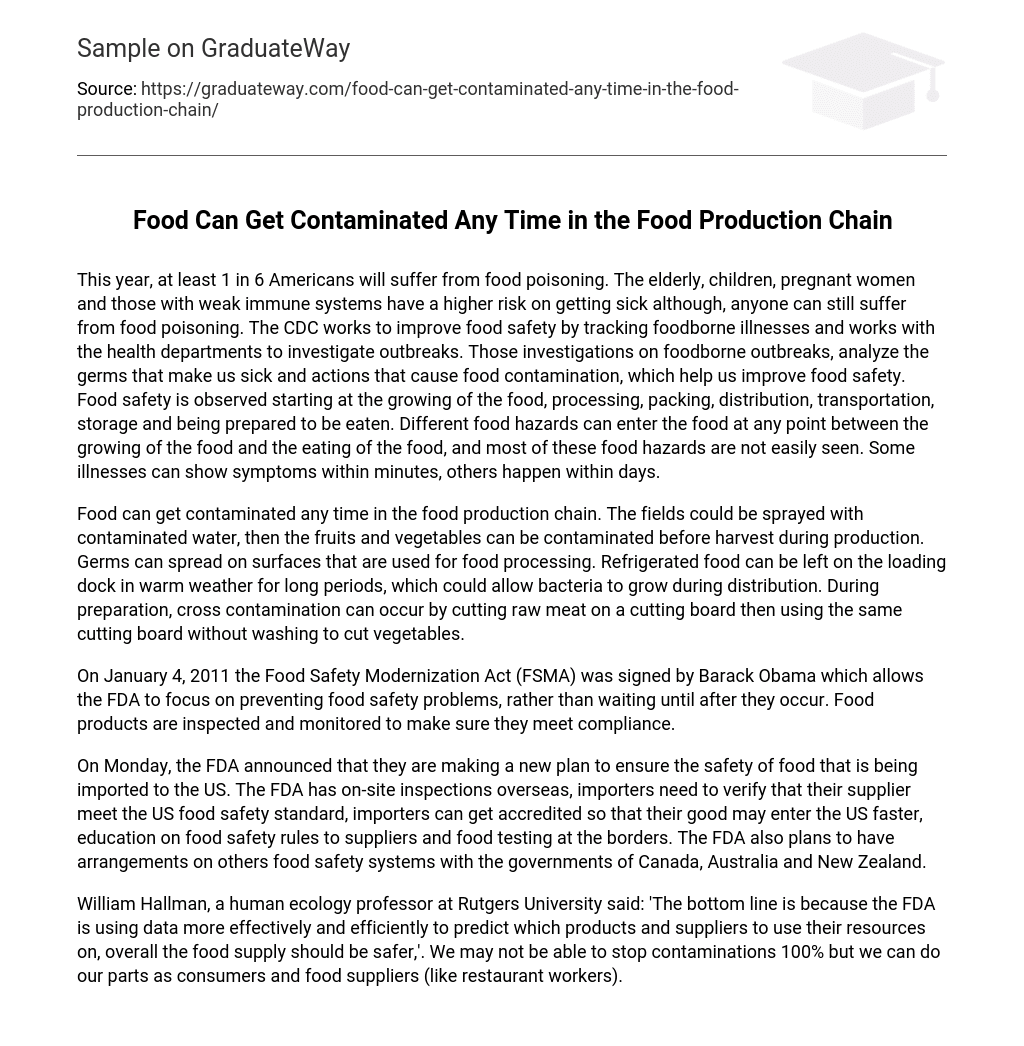This year, at least 1 in 6 Americans will suffer from food poisoning. The elderly, children, pregnant women and those with weak immune systems have a higher risk on getting sick although, anyone can still suffer from food poisoning. The CDC works to improve food safety by tracking foodborne illnesses and works with the health departments to investigate outbreaks. Those investigations on foodborne outbreaks, analyze the germs that make us sick and actions that cause food contamination, which help us improve food safety. Food safety is observed starting at the growing of the food, processing, packing, distribution, transportation, storage and being prepared to be eaten. Different food hazards can enter the food at any point between the growing of the food and the eating of the food, and most of these food hazards are not easily seen. Some illnesses can show symptoms within minutes, others happen within days.
Food can get contaminated any time in the food production chain. The fields could be sprayed with contaminated water, then the fruits and vegetables can be contaminated before harvest during production. Germs can spread on surfaces that are used for food processing. Refrigerated food can be left on the loading dock in warm weather for long periods, which could allow bacteria to grow during distribution. During preparation, cross contamination can occur by cutting raw meat on a cutting board then using the same cutting board without washing to cut vegetables.
On January 4, 2011 the Food Safety Modernization Act (FSMA) was signed by Barack Obama which allows the FDA to focus on preventing food safety problems, rather than waiting until after they occur. Food products are inspected and monitored to make sure they meet compliance.
On Monday, the FDA announced that they are making a new plan to ensure the safety of food that is being imported to the US. The FDA has on-site inspections overseas, importers need to verify that their supplier meet the US food safety standard, importers can get accredited so that their good may enter the US faster, education on food safety rules to suppliers and food testing at the borders. The FDA also plans to have arrangements on others food safety systems with the governments of Canada, Australia and New Zealand.
William Hallman, a human ecology professor at Rutgers University said: ‘The bottom line is because the FDA is using data more effectively and efficiently to predict which products and suppliers to use their resources on, overall the food supply should be safer,’. We may not be able to stop contaminations 100% but we can do our parts as consumers and food suppliers (like restaurant workers).





